Introduction
I recently encountered the notion of healthy senescent cells and their counterpart, known as “zombie cells.” It came across my radar in an Instagram reel about anti-aging supplements and reverse-aging supplements.
As synchronicity may have it, I came across a post on my Scituate High School Facebook page and an interesting interview with Greg Kelly, a classmate with whom I shared many AP classes. I knew him well and trusted his scientific brilliance and integrity, so I listened in on his interview with renowned biohacker Dave Asprey. (See video interview below)
Dave Asprey, host of the popular podcast, The Human Upgrade, came across my radar in a post from another community I subscribe to called ConsciousnessCalibrations.com. Due to his influence in the “biohacker” world, someone in the community requested a calibration of him. He came up as a person of integrity at higher consciousness, which can be rare today.
As a teacher of consciousness, I decided to do some muscle testing myself with Linda Armstrong, a certified Belief, Body, and Emotion Code practitioner.
Linda is experienced at consciousness calibrations, including our calibrations of the company behind the Neurohacker website, the content of the website, and their anti-aging and reverse-aging supplements.
The calibrations we came up with were 295 -400 on the Map of Consciousness, which is significant and of higher consciousness. That’s why I wanted to start exploring senescent and zombie cells and introduce them to you!
Also, I have been kanoodling around the idea of beliefs around aging and the mass consciousness and false marketing messages and beliefs we have about aging. See my Beleif Code session with Linda Armstrong, Removing Limiting Beliefs Around Aging Gracefully here.
Now, understanding the intricacies of senescent cells, often called “zombie cells,” plays a crucial role in unraveling the mysteries surrounding aging and its impact on health.
Senescent cells are essentially cells that have ceased dividing but do not die off as expected. Instead, they linger in the body, accumulating over time and secreting harmful chemicals that can lead to inflammation and damage surrounding tissues. This characteristic behavior earns them the moniker “zombie cells”.
EPISODE #1009: Upgrade Spotlight: How to Fight Zombie Cells and Win Aging – Neurohacker Collective
IN THIS “UPGRADE SPOTLIGHT” EPISODE OF THE HUMAN UPGRADE™… you’ll learn about the zombie cells taking up valuable space in your body and how you can clear them out with senolytics.
AFFILIATE DISCLAIMER:
This Mind Body Spirit Network site contains affiliate links to products, online events, and tools for personal & professional transformation from Sounds True. The Shift Network, MindValley, Evolving Wisdom, Positive Psychology, mindbodygreen, and other reputable and consciously aligned personal development, spiritual growth, and transformational companies. We set ourselves apart by vetting teachings and resources calibrated to be of higher consciousness, meaning upward-lifting, positively oriented, and constructive. We may receive a commission for purchases made through these links.
The Nature and Origin of Senescent Cells
Definition and Characteristics
Senescent cells are an intriguing and somewhat paradoxical component of the cellular environment. They originate from normal cells that enter a state where cell division is permanently halted due to various stressors. Despite this arrest in proliferation, they actively resist apoptosis—a programmed cell ‘suicide’ mechanism that usually removes damaged or unnecessary cells from the organism.
This resistance allows them to evade a cell’s typical lifecycle, leading to their accumulation. A defining attribute of these cells is their ability to secrete various substances, collectively termed the senescence-associated secretory phenotype (SASP). These factors include inflammatory cytokines, growth factors, proteases, and other molecules that can profoundly impact the local cellular environment and the organism as a whole.
Triggers for Senescence
Numerous stressors and damage signals can trigger senescence.
One of the primary triggers is the shortening of telomeres—protective caps at the ends of chromosomes—beyond a critical length, which naturally occurs as cells divide.
Telomere attrition acts as a built-in timer for cellular lifespan, contributing to the cessation of cell division.
Damage to DNA, whether by external radiation, chemicals, or internal free radicals (oxidative stress), can also stimulate senescence to prevent the propagation of damaged genetic material.
Cellular response to excessive or inappropriate oncogene activation is another critical trigger for senescence, serving as a protective measure to thwart unregulated cell proliferation, which could lead to tumorigenesis.
All these triggers catalyze the senescent state to enact a barrier against potential neoplastic transformation, thereby reducing the risk of cancer development, at least initially.
Anti-Aging Supplements. Woo-Woo or True?
According to our consciousness calibrations, the company behind Neurohacker.com, the content of their website, and their supplements all calibrate of higher consciousness on the Map of Consciousness® from 203-400*. Anything at 200 or above is a positively oriented, upward-lifting, and constructive energy field. Anything below 200 is the energy of lower consciousness and is advisable to avoid.
SENOYTIC SUPPLEMENTS: THE ULTIMATE RECIPE FOR CELL REPAIR & REJUVENATION
Qualia Senolytic represents the culmination of years of research into the biological mechanisms of aging. This two-day rejuvenation regimen may hold the key to unlocking cellular health and revitalizing aging tissues throughout the body.
MEDICAL DISCLAIMER: Ahoy there! While our voyage through the sea of wellness is guided by passion and sprinkled with fun facts, remember, we’re navigators, not certified healers. For any storms or hurricanes concerning your health, please consult the captain of your medical team. Here’s to sailing with insight but docking with a proper doctor for serious matters!”
Senescent Cells and Aging
a. Protective Role Against Cancer:
Senescent cells initially safeguard against the proliferation of damaged or potentially malignant cells, essentially acting as a brake on uncontrolled cell growth that could lead to cancer. This protective mechanism showcases the body’s innate ability to prevent the spread of potentially harmful cellular activity through senescence.
b. Negative Impact and Accumulation:
However, over time, the accumulation of senescent cells in the body can have adverse effects. The secretions from these cells, part of the SASP, can lead to chronic inflammation, disrupt tissue structure and function, and ultimately contribute to a decline in health and the development of age-related diseases. This paradoxical nature underscores the complexity of senescent cells, wherein their prolonged existence in the body shifts from protective to detrimental.
Explanation of the nickname “zombie cells”
The term “zombie cells” aptly describes senescent cells due to their unique state of being neither fully alive nor dead in the traditional sense.
While they do not increase, these cells do not succumb to apoptosis, allowing them to persist indefinitely within tissues.
Their presence and accumulation are paradoxically both a defense mechanism and a source of damage.
Initially, this defense mechanism aims to protect the organism by halting the division of damaged or stressed cells, which could potentially turn malignant.
However, the flip side is that, over time, these cells accumulate and secrete harmful substances that can degrade tissue function and contribute to aging, much like zombies that refuse to die and instead spread harm.
Impact on Health and Aging
Senescent cells contribute to aging and various age-related diseases through multiple pathways.
Their secretions, part of the SASP, can disrupt everyday cellular environments, promoting chronic inflammation—a key player in the aging process and a contributor to many age-associated pathologies such as arthritis, diabetes, and heart disease.
Additionally, these cells can alter the behavior of nearby cells, propagating senescence and its detrimental effects even further within tissues.
The Dark Side of Senescent Cells
As cells age and cease to divide, they enter a state of senescence. While initially a protective mechanism, their eventual accumulation poses significant risks to organismal health and function. This section delves into the darker implications of senescent cells, elucidating how their continued presence, acting akin to double agents, can shift from being a preventative measure against cancer to becoming facilitators of age-related decline and disease.
Accumulation of senescent cells with aging: With age, the body’s efficiency in clearing senescent cells diminishes, leading to their accumulation. This increase is associated with a decline in the regenerative potential of tissues, resulting in impaired tissue repair and function. The environment within which these cells accrue becomes increasingly hostile to maintaining healthy tissue homeostasis.
How the accumulation affects our health: The secretory phenotype of accumulated senescent cells disrupts normal cellular functions and communication. This disruption can manifest in numerous consequences for an individual’s health, ranging from decreased organ function to the worsening of chronic inflammatory conditions. The accumulation is not just passive but actively harms the tissue microenvironment by modifying extracellular matrices and influencing the behavior of neighboring cells.
Promotion of age-related diseases: Senescent cells’ influence extends to promoting various age-related pathologies. Their presence and activity are implicated in the progression of several chronic diseases, including cardiovascular diseases, type 2 diabetes, osteoarthritis, and neurodegenerative disorders. The common denominator in many of these conditions is the chronic inflammation driven by the signaling molecules these cells produce.
The role of SASP (senescence-associated secretory phenotype): SASP components, a diverse array of proteins including cytokines, chemokines, and proteases, contribute substantially to the deterioration of the tissue milieu. This includes inducing a pro-inflammatory state and promoting a fibrotic environment, which can compromise tissue elasticity and resilience. Moreover, SASP factors can incite a bystander effect, inducing senescence in adjacent cells and perpetuating the cycle of damage.
When discussing the detriments of cellular senescence, it is crucial to consider how these cells interact with the aging process and their role as key contributors to the decline associated with advancing age. The balance between protective versus deleterious impacts is delicate, tipping towards negative consequences as the quantity of senescent cells increases over time. Addressing this accumulation and its effects may be vital for mitigating the onset of age-related diseases and enhancing the overall quality of life as individuals grow older.
MEDICAL DISCLAIMER: Welcome to our magical kingdom of health and happiness tips! 🌟 While we wield our pens with the enthusiasm of wizards, we must confess our wands lack the power to provide professional medical advice. For solutions stronger than ours—those that can truly mend or heal—please turn to your trusted healthcare provider.
Age-Related Diseases Linked to Senescent Cells
Age-related diseases are a conglomerate of medical conditions frequently observed in the elderly. Senescent cells are implicated in various age-related diseases, primarily due to their role in chronic inflammation, often called ‘inflammaging.’ The chronic secretion of inflammatory factors establishes an environment conducive to disease progression.
Overview of diseases and conditions associated with senescent cells
Through their SASP, Senescent cells are linked to a spectrum of age-related diseases.
These range from metabolic disorders to degenerative diseases:
- In diseases like atherosclerosis, senescent cells within the blood vessels exacerbate plaque formation.
- In metabolic disorders such as type 2 diabetes, they disrupt normal insulin signaling and glucose metabolism.
- The role of senescent cells in osteoarthritis involves the degradation of joint cartilage and chronic pain.
- At the same time, they contribute to the fibrotic tissue remodeling that impedes normal lung function in pulmonary fibrosis.
- Their presence in the brain is also associated with neurodegenerative diseases like Alzheimer’s disease, where they may promote neuroinflammation and contribute to the accumulation of pathogenic proteins.
 Detailed mechanisms of action in disease contexts
Detailed mechanisms of action in disease contexts
- In cardiovascular diseases, senescent cells can promote endothelial dysfunction, impairing vasodilation and increased vascular stiffness. The secretion of pro-inflammatory cytokines and other factors can contribute to the progression of atherosclerotic plaques, which can lead to heart attacks or strokes.
- In metabolic disorders, SASP factors can disrupt adipose tissue function, leading to enhanced insulin resistance and disrupted lipid metabolism, hallmarks of diabetes and obesity.
- In joint tissues, the release of proteases from senescent cells can break down cartilage, whereas, in the central nervous system, they can disrupt neuronal function and contribute to the pathology of diseases like Parkinson’s and Alzheimer’s.
- Interaction with other cellular and molecular pathways
Senescent cells do not operate in isolation; they interact with immune cells, stem cells, and other structural components of the tissue. This interaction influences the immune surveillance system, which can either clear senescent cells or, when dysfunctional, contribute to their accumulation.
Similarly, signaling factors released can impair stem cells’ regenerative capacity, depleting the tissue’s ability to repair and regenerate.
The extracellular matrix is another target; senescent cells can alter its components, leading to tissue stiffness and loss of function.
Conclusion: The Significance of Addressing Senescent Cells in Age-Related Diseases
In summary, senescent cells emerge as central players in the etiology of multiple age-related diseases through mechanisms like chronic inflammation and interaction with cellular and environmental factors.
Understanding these pathways is critical, as it provides a foundation for developing targeted interventions to alleviate the burden of these diseases.
Research advancements, like those at the Neurohacker Collective, may provide new avenues for therapeutic intervention to prevent or delay the onset of age-related pathologies. Hence, managing senescent cell burden could be a promising strategy for maintaining health and function in aging populations.
Research and Therapeutic Approaches
Research and therapeutic interventions targeting senescent cells are at the forefront of aging and age-related disease studies due to their potential to alleviate these cells’ negative impacts.
Exploring Senolytics: Drugs that Target Senescent Cells
Senolytics are a class of drugs designed specifically to target and eliminate senescent cells. These substances selectively induce apoptosis in senescent cells while sparing healthy cells.
Initial research in animal models has shown that senolytics can reduce the burden of senescent cells and mitigate some aspects of aging and age-related diseases. Various senolytic agents are being tested, some of which target specific pathways involved in the survival of senescent cells, such as the anti-apoptotic defenses that these cells upregulate.
Examples of such agents include those targeting the BCL-2 family of proteins, which help senescent cells resist apoptosis. Translating these findings into human clinical trials is ongoing, with the hope that senolytics might extend health span and possibly even lifespan.
Understanding Senomorphics: Modulating the Harmful Secretions
Senomorphics are drugs that do not necessarily kill senescent cells but rather suppress their harmful secretory phenotype (SASP).
The aim is to prevent the release of pro-inflammatory cytokines, chemokines, and proteases that can lead to tissue deterioration and systemic inflammation.
By modulating these secretions, it may be possible to mitigate the damaging effects of senescent cells without the need for their clearance. This approach could benefit tissues where removing senescent cells might be challenging or where these cells still play a valuable role.
The Future of Treatments for Age-Related Diseases
The implications of treatments targeting cellular senescence extend beyond the direct impact on senescent cell populations. By addressing one of the fundamental causes of biological aging and age-related diseases, these therapeutic strategies could revolutionize how these conditions are managed. Current and future research may identify novel targets for senolytic and senomorphic drugs, creating a broader range of therapeutic options.
Potential Impact on Human Healthspan and Lifespan
Interventions targeting senescent cells aim to improve health span—the period of life spent in good health—rather than just extend lifespan. The rationale is that reducing the burden of senescent cells could decrease age-related morbidity and increase the years lived without disability or chronic disease.
There is also speculation about the potential for lifespan extension; if senescent cells contribute to the fundamental aging process, removing them might slow down this process.
Continuing Research and Clinical Trials
As this field of research progresses, current and future clinical trials will be vital in determining the safety, efficacy, and potential side effects of senolytic and senomorphic therapies in humans.
Such studies are essential for translating findings from animal models to human health.
It is important to note that these approaches are still emerging, and much research is needed to determine the long-term outcomes and the best applications for these drugs.
In conclusion, research in senolytics and senomorphics holds promising potential for alleviating age-related diseases and enhancing healthy aging.
Ongoing studies continue to refine our understanding of how to safely and effectively eliminate or neutralize the damaging effects of senescent cells.
As this area of science advances, it will bring closer the prospect of therapeutic strategies that target the fundamental mechanisms of aging, with profound implications for health span and the overall quality of life in the aging population.
The Future of Research in Cellular Senescence
Future research in cellular senescence is expected to focus on a deeper understanding of the mechanisms underlying senescence and its implications for age-related diseases, tissue repair, and regeneration. Given its dual roles in detrimental aging processes and tumor suppression, senescence research is at a crossroads, seeking to balance these opposing outcomes.
Advancements in several vital domains are postulated. First, it is critical to identify and validate novel senescence biomarkers. Current markers are not exclusively senescent-cell specific, and the heterogeneity of senescent cells complicates their identification. Discovering precise biomarkers could enhance the specificity of senolytic and senostatic therapies, aiming to target or modulate senescent cells selectively.
Secondly, the heterogeneity of senescent cells is a burgeoning study area. Senescent cells can arise from different cell types and through diverse triggers such as telomere shortening, DNA damage, or oncogenic stress. This leads to varied senescence phenotypes that may require different therapeutic approaches. Understanding these disparate forms of cellular senescence could inform more nuanced and effective interventions.
Moreover, the interplay between senescent cells and the immune system is fertile for research. Senescent cells secrete inflammatory and immune-modulating factors as part of the senescence-associated secretory phenotype (SASP), influencing age-related pathologies. Clarifying this relationship could also assist in designing better immunomodulatory treatments.
Understanding the senescence-associated epigenetic modifications paves the way for possible reversal of these changes. Epigenetic reprogramming has shown promise in restoring function to senescent cells in early studies. Harnessing this ability could lead to interventions that rejuvenate tissues or delay senescence.
Lastly, essential growth areas are exploring tissue-specific senescence effects and developing model organisms that accurately reflect human aging. Since different tissues can exhibit distinct responses to senescence, an organ-specific approach to understanding and treating senescence could be necessary. Improved animal models will aid in elucidating the complex biology of senescence in whole-organism contexts.
As research progresses, ethical considerations, like the impact of extending lifespan on society and resource allocation, will become paramount. Translating findings from cellular senescence research into clinical practice will require scientific and medical advances and careful ethical evaluations.
Discover the Anti Aging and Reverse Aging Supplements from the NeuroHacker Collective
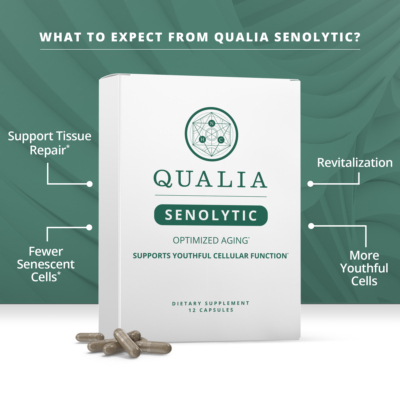 Qualia Senolytic Two-Day Cell Rejuvenation Regimine
Qualia Senolytic Two-Day Cell Rejuvenation Regimine
The NeuroHacker Collective is a group that focuses on developing products intended to improve cognitive function, mental health, and overall well-being, leveraging the latest in scientific research to create their formulations. With the broader endeavor in mind to address the aging process, they have expanded their scope to include supplements that might influence senescence and the aging of cells.
Qualia Senolytic by NeuroHacker Collective is designed as a two-day cell rejuvenation regimen. The term “senolytic” pertains to an agent that specifically targets and promotes the destruction of senescent cells. The name implies that the product claims to have senolytic properties, aiming to eliminate senescent cells that accumulate with age and contribute to various age-related diseases, thus potentially rejuvenating the body at the cellular level.
The approach taken with such supplements often incorporates a mixture of compounds shown in preliminary research to have senolytic or senomorphic effects. For example, some senolytics include natural flavonoids like quercetin and fisetin, as these molecules have demonstrated potential in lab and animal studies to induce apoptosis in senescent cells. Another component might be dasatinib, a cancer drug known for its senolytic properties, but such a drug would only be included under specific regulatory conditions and typically requires a prescription.
 Qualia Senolytic and similar products are marketed because they support the body’s natural ability to manage senescent cells, which may contribute to improved healthspan. However, it’s essential to note that while some ingredients in these supplements have shown promise in lab settings, translating these findings to clinically effective human treatments requires extensive, rigorous research and testing. The currently available data is promising but still in the early stages, and such products should not be assumed to be as effective as pharmaceutical-grade senolytics until more evidence is available.
Qualia Senolytic and similar products are marketed because they support the body’s natural ability to manage senescent cells, which may contribute to improved healthspan. However, it’s essential to note that while some ingredients in these supplements have shown promise in lab settings, translating these findings to clinically effective human treatments requires extensive, rigorous research and testing. The currently available data is promising but still in the early stages, and such products should not be assumed to be as effective as pharmaceutical-grade senolytics until more evidence is available.
It is always recommended that individuals consult with healthcare professionals before starting any new supplementation, especially those targeting cellular processes. The mechanisms involved are complex, and interactions with other medications or health conditions are potential.
Clinical research and regulatory agency approval ensure the safety and efficacy of therapeutic interventions. Dietary supplement regulations are less stringent than pharmaceuticals, so it’s important to approach such products with due scrutiny and in consultation with a healthcare provider.
MEDICAL DISCLAIMER: In our kitchen, we cook up deliciously healthy advice seasoned with love and care. But, just like substituting baking soda for baking powder, taking health guidance without consulting your personal nutritionist or physician might not result in the perfect wellness recipe. For medical advice that caters precisely to your ingredients (a.k.a. your body), please see a certified professional.
Conclusion
Senescent cells are a prime example of biological entities with a dual nature concerning organismal health.
On the one hand, they are crucial for processes like wound healing and embryonic development, as they can facilitate tissue repair and prevent the proliferation of damaged cells that could become cancerous.
Conversely, the accumulation of senescent cells is associated with aging and chronic diseases, as they secrete pro-inflammatory factors that can lead to tissue dysfunction.
Ongoing research is pivotal, given the complex role of senescent cells. As scientists uncover more about the mechanisms that regulate cellular senescence and its impacts on the body, there is potential to develop targeted therapies. These therapeutic strategies could selectively eliminate senescent cells (senolytics) or suppress their harmful secretions (senomorphics).
Understanding and managing senescent cells through these therapies could significantly promote healthier aging. By mitigating the harmful effects of these cells, such interventions might delay the onset of age-related diseases, extend health span, and improve the overall quality of life for aging populations.
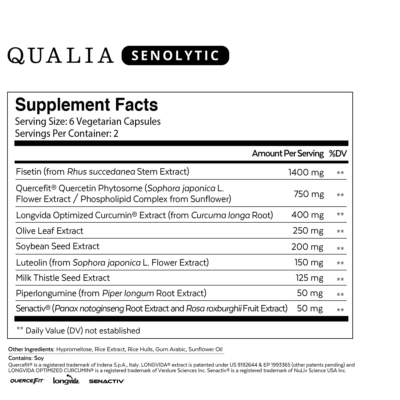 Anti-aging supplements, like Qualia Senolytics, claim to support this process by providing a combination of compounds believed to specifically target and promote the clearance of senescent cells. Such supplements typically include fisetin, quercetin, and other polyphenols that have shown senolytic activity in some scientific studies. However, it is essential to approach these supplements with a critical eye, as their efficacy and safety profiles are not as well-established as pharmaceutical interventions, and they may not all undergo the same rigorous testing and approval process.
Anti-aging supplements, like Qualia Senolytics, claim to support this process by providing a combination of compounds believed to specifically target and promote the clearance of senescent cells. Such supplements typically include fisetin, quercetin, and other polyphenols that have shown senolytic activity in some scientific studies. However, it is essential to approach these supplements with a critical eye, as their efficacy and safety profiles are not as well-established as pharmaceutical interventions, and they may not all undergo the same rigorous testing and approval process.
Therefore, while the theoretical foundation for the use of senolytics, including supplementation, is grounded in sound science, there is a clear necessity for more robust clinical evidence to solidify the role of such compounds in healthy aging strategies. It is an exciting front in biogerontology, bearing the promise of not just extending lifespan but enhancing life quality, although it necessitates a thoughtful, evidence-based approach to integration into health practice.
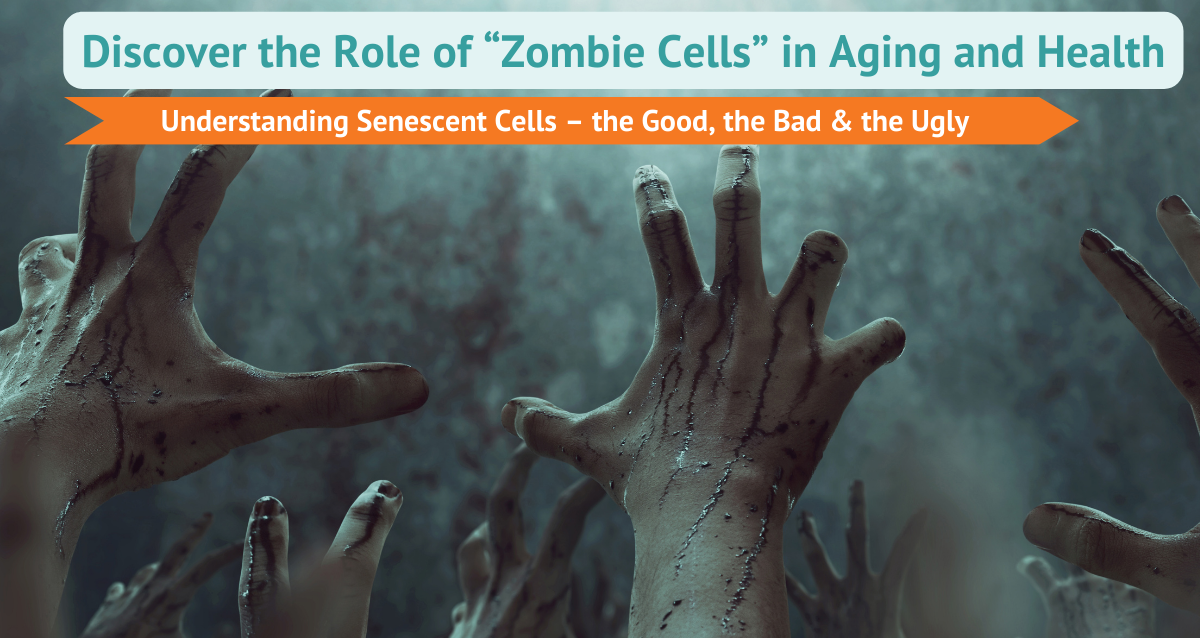

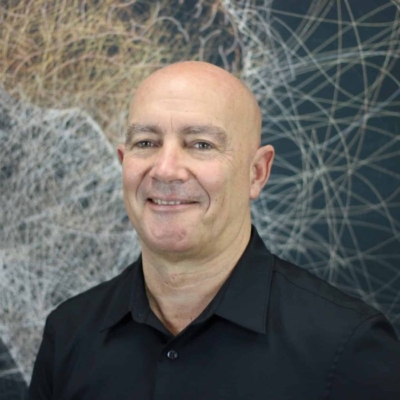


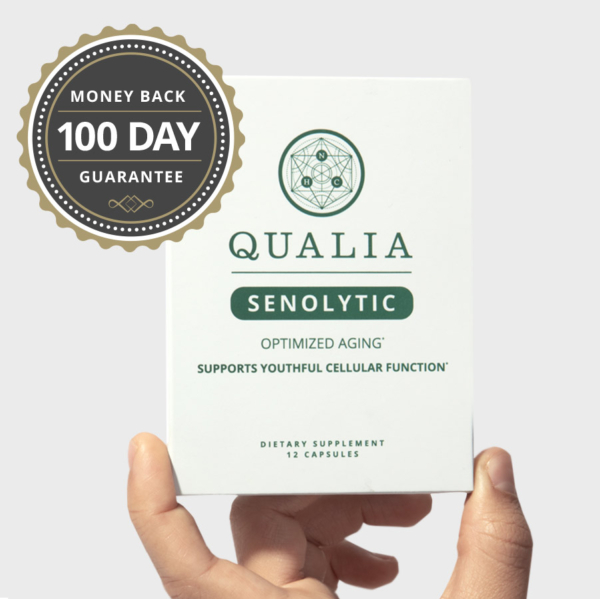















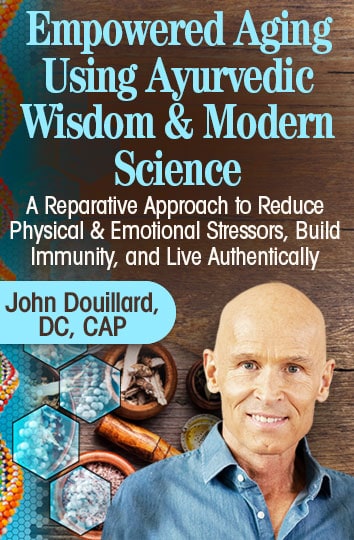
Leave a Reply